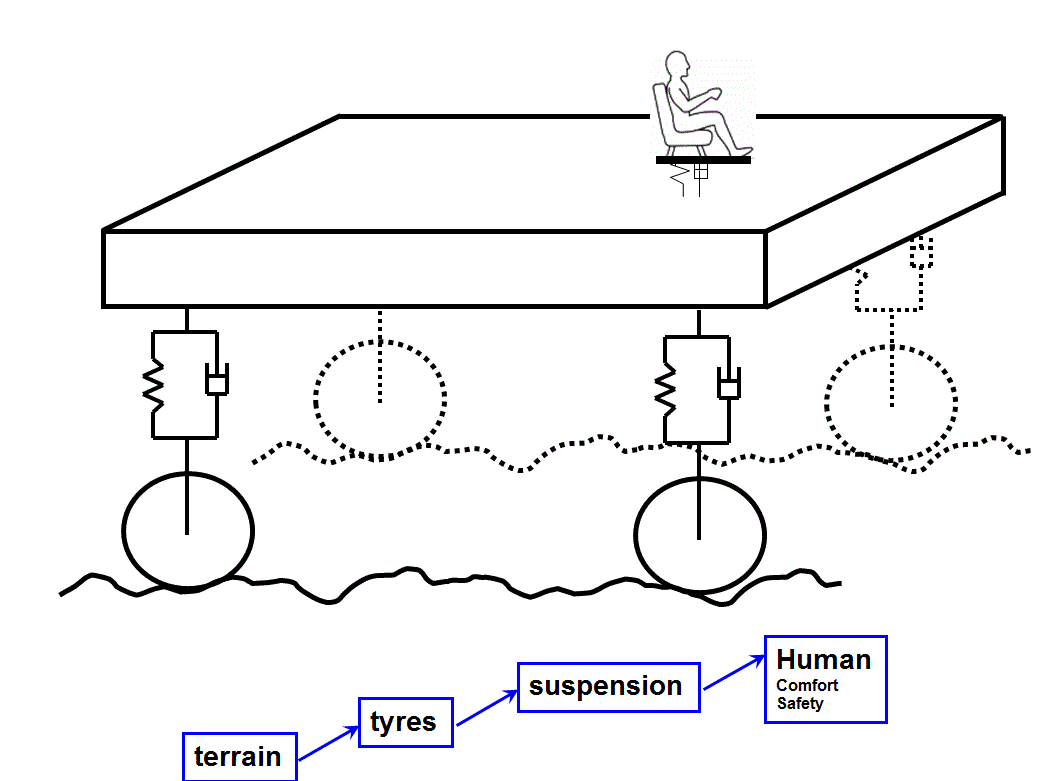
The VDG research focus areas currently entail a range of activities that include:
1) Roll-over stability of heavy wheeled vehicles.
Commercial vehicles are constantly being upgraded to carry higher payloads while reducing vehicle weight. Furthermore the difference in weight between empty and fully laden vehicles is substantial and has a negative effect on vehicle mobility and dynamics. The reduction in mobility is a direct result of the added mass that lowers the power to weight ratio, increases the pressure of the tyres in contact with the terrain and detrimentally changes the vehicle dynamics due to the increased center of mass height as well as mass moments of inertia. It is therefore of utmost importance to address vehicle roll-over stability as the scope for saving lives is enormous.
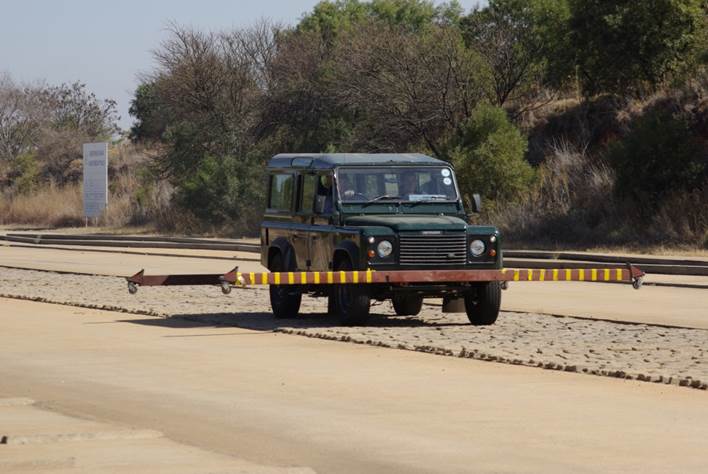
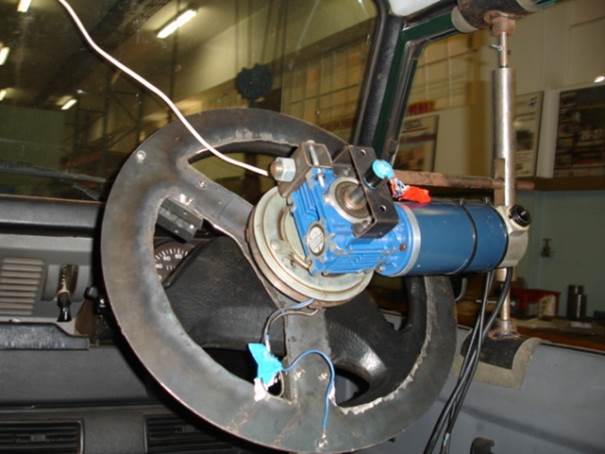
Fishook rollover test Steering robot
2)Tyre characterization and modeling.
Most efforts worldwide have focused on characterizing tyres and developing tyre models for on-road use and not for off-road use. The focus was also on the types of tyres used on passenger cars and commercial vehicles. This resulted in the development and validation of tyre models that are adequate for on-road use, but give unsatisfactory results with off-road tyres when driving over rough off-road terrains. A renewed research effort is required to correct this gap in current knowledge to ensure that all future vehicle models and simulation efforts on heavy off-road vehicles are conducted with confidence.


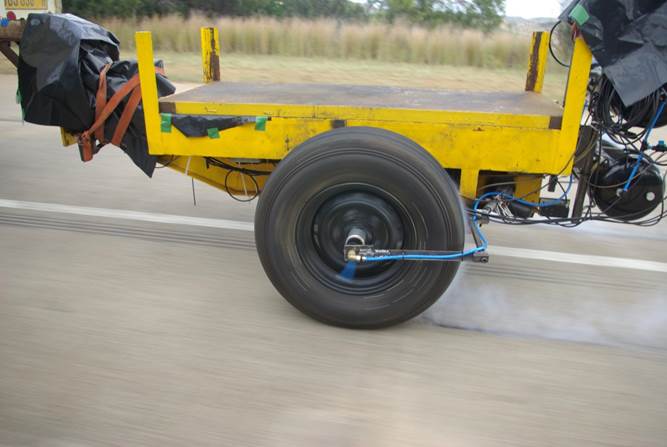
Tyre test trailer Tyre slip measurement with digital image correlation Tyre braking test
This process should include the following aspects:
· Validate and calibrate existing tyre test equipment
· Build dynamic models of existing tyre test equipment
· Upgrade existing equipment to measure vertical forces, traction and braking characteristics as well as testing at larger slip angles
· Correlate and validate different tyre models using dynamic models and experiments
· Investigate best tyre models to be used for handling analysis
· Investigate best tyre models to be used for ride comfort analysis over rough roads
· Investigate frequency response of tyre models
· Compare 2-dimensional and 3-dimensional tyre-road contact models
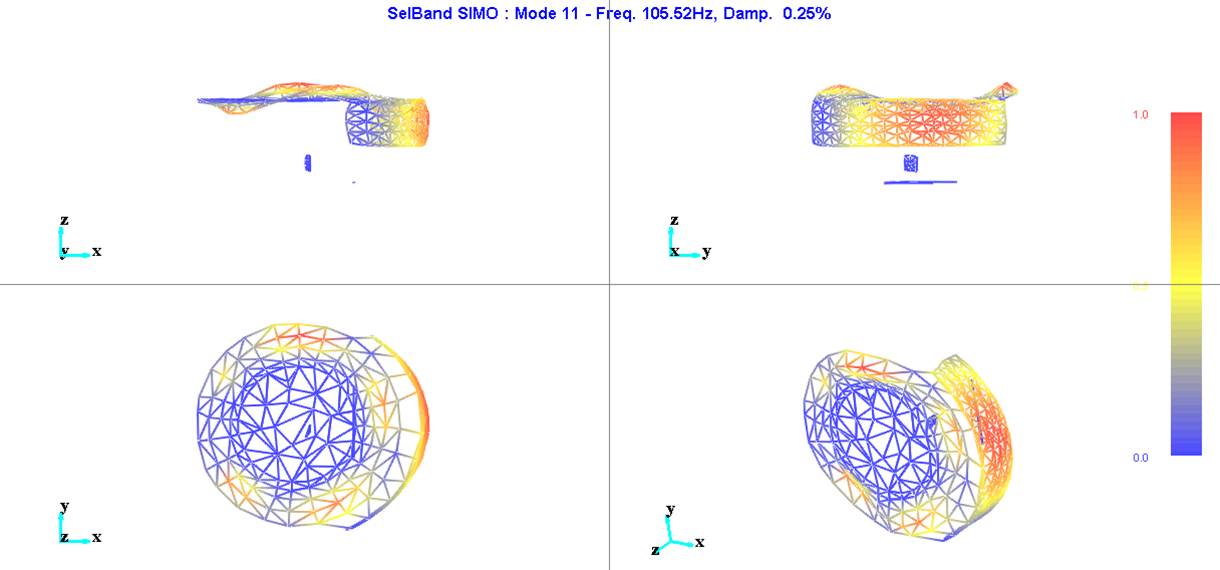
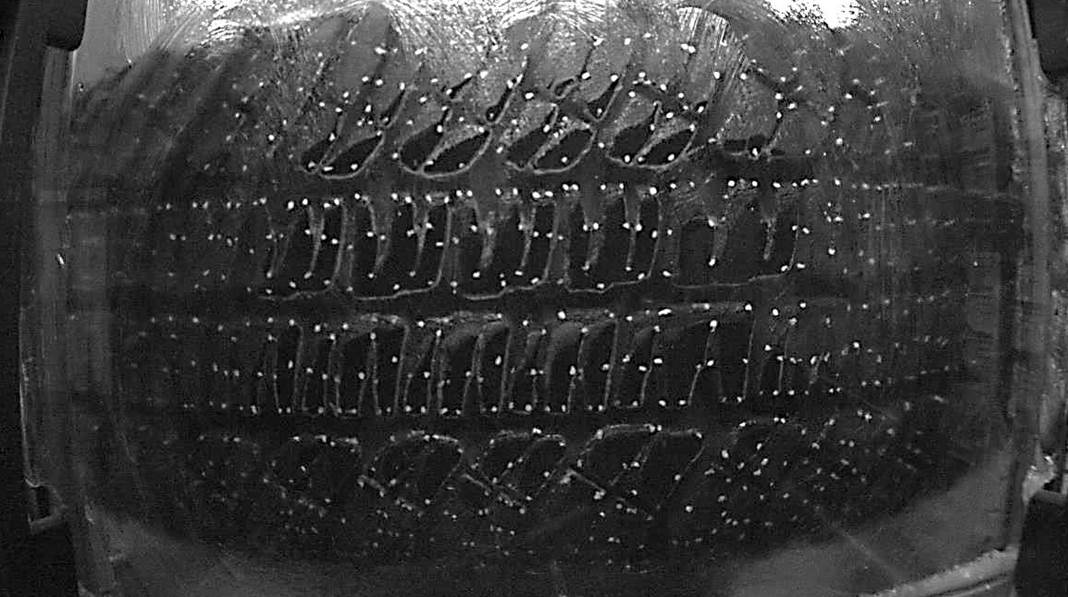

Tyre modal analysis using scanning laser vibrometry Tyre contact area measurement Tyre lateral force measurements
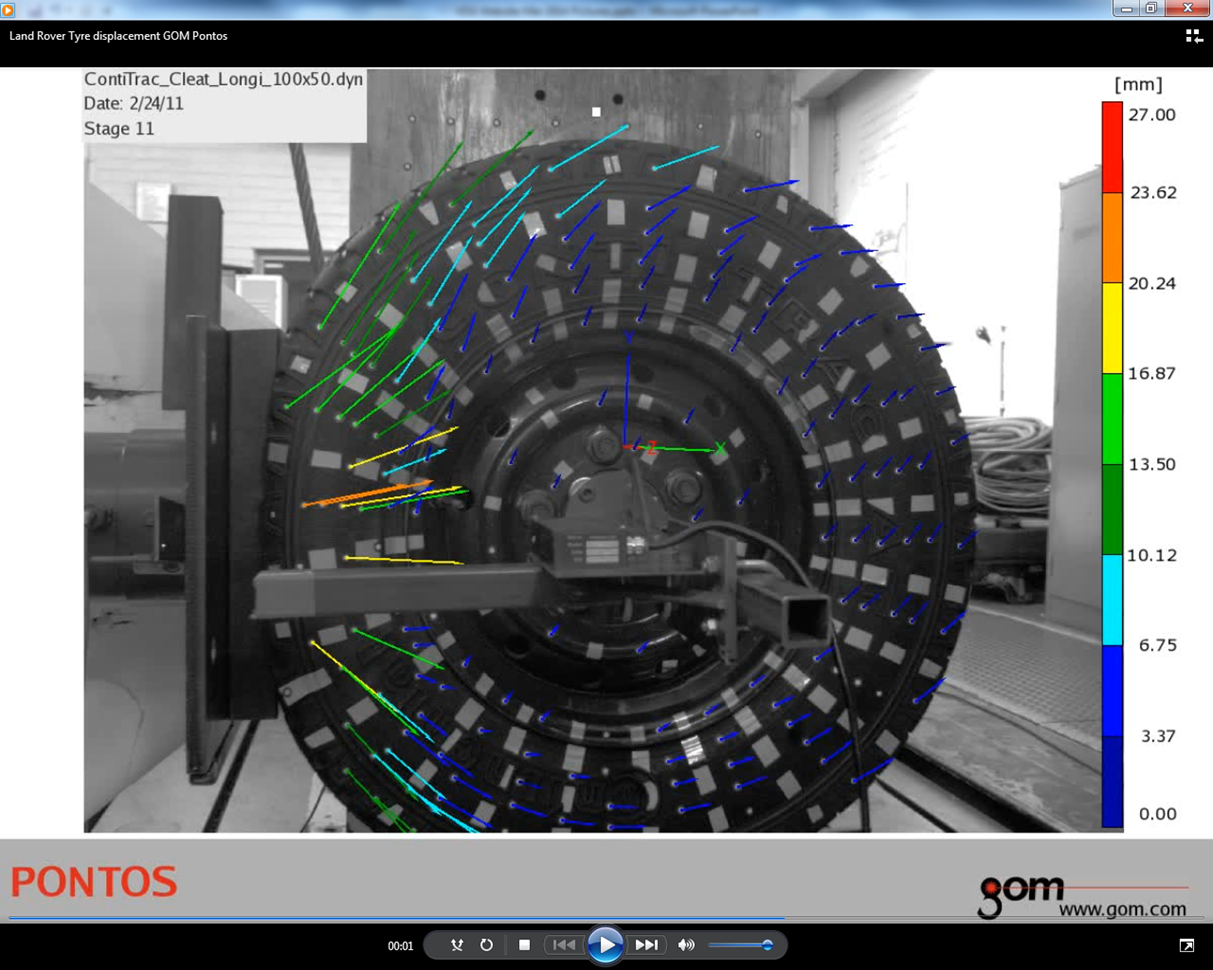
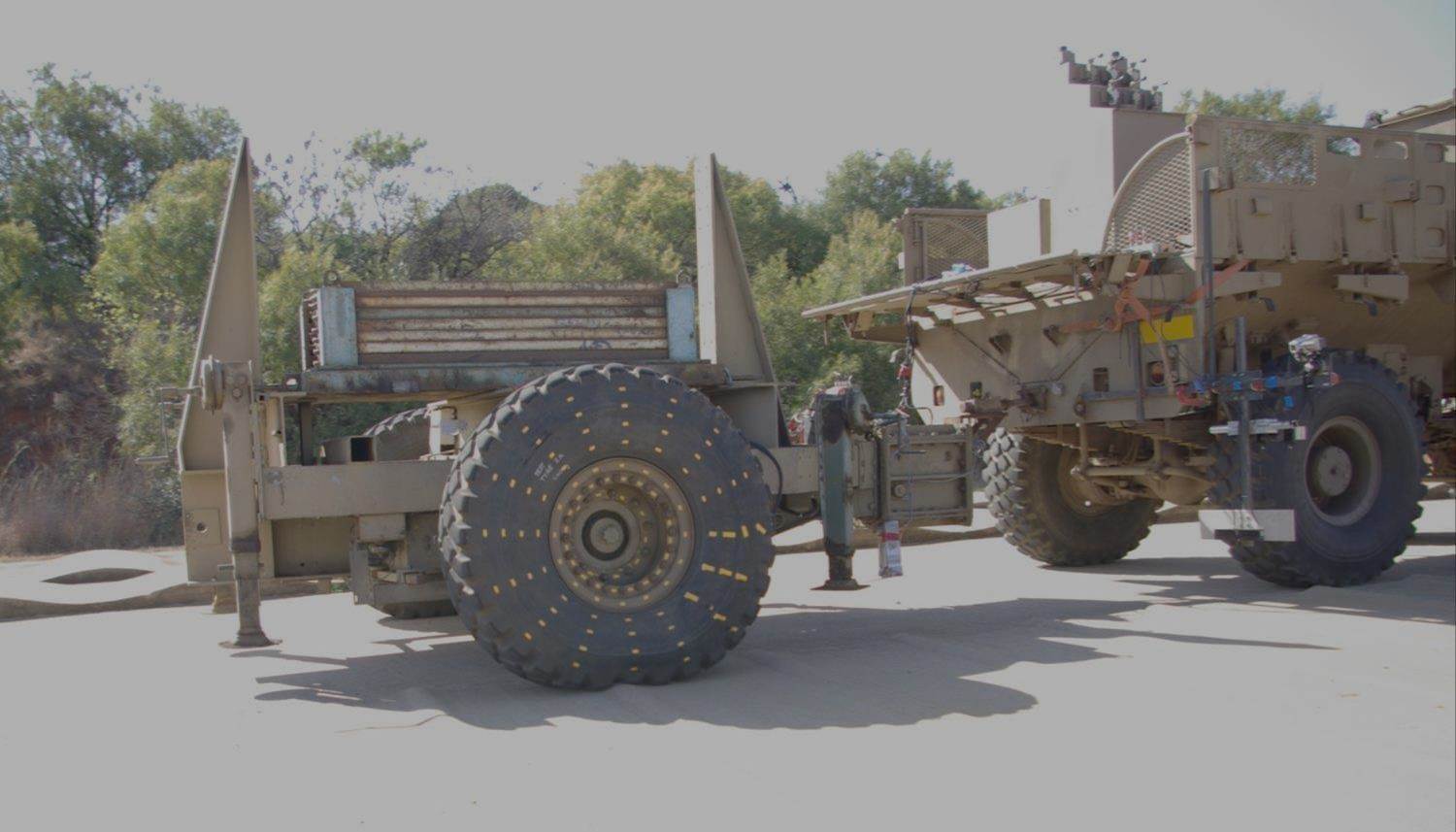
Tyre dynamic deformation measurement using digital image correlation Tyre testing over rough terrain
3) Terrain profile measurement and modeling.
Except for aerodynamics forces, all other forces acting on a vehicle is transmitted through the tyre-terrain contact patch. Accurate vehicle dynamics simulation is therefore impossible without proper
knowledge of the terrain profile.
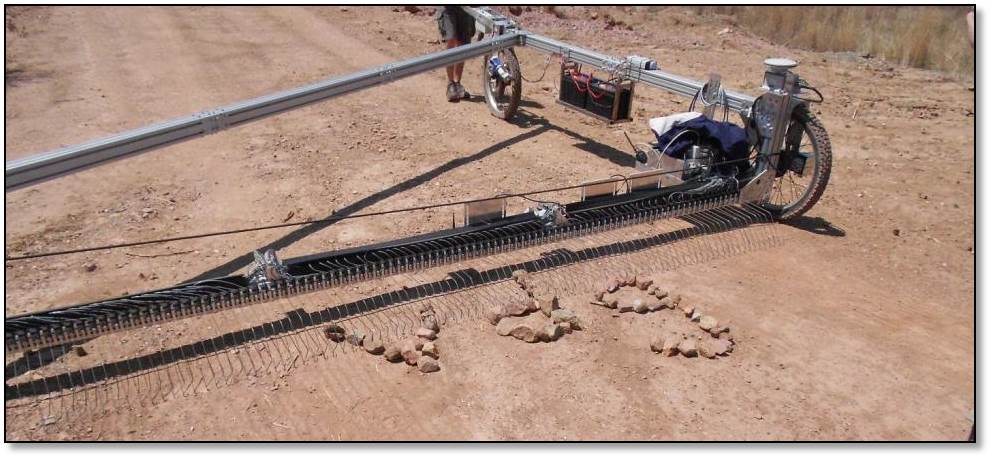
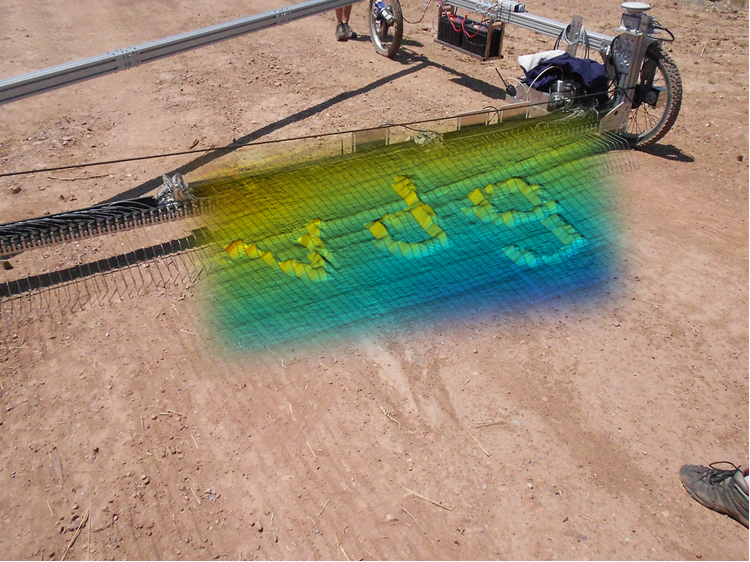
Terrain profile measurement using “Can-can” machine
Accurate terrain profiles, in high detail, are required for use in simulation and model validation. Measured terrain profiles must be developed into road models for use in simulstion. The measurement and modeling of terrain profiles are applicable to hard terrains as well as soft soil. It is required to validate and calibrate existing rough road profilometers and to improve their accuracy. These profilometers should be used to obtain profiles of representative terrains. Measured terrain profiles must be implemented in simulation in the form of 2- and 3-dimensional road models that can be used in conjunction with tyre models to determine accuracy of the modeling approach.
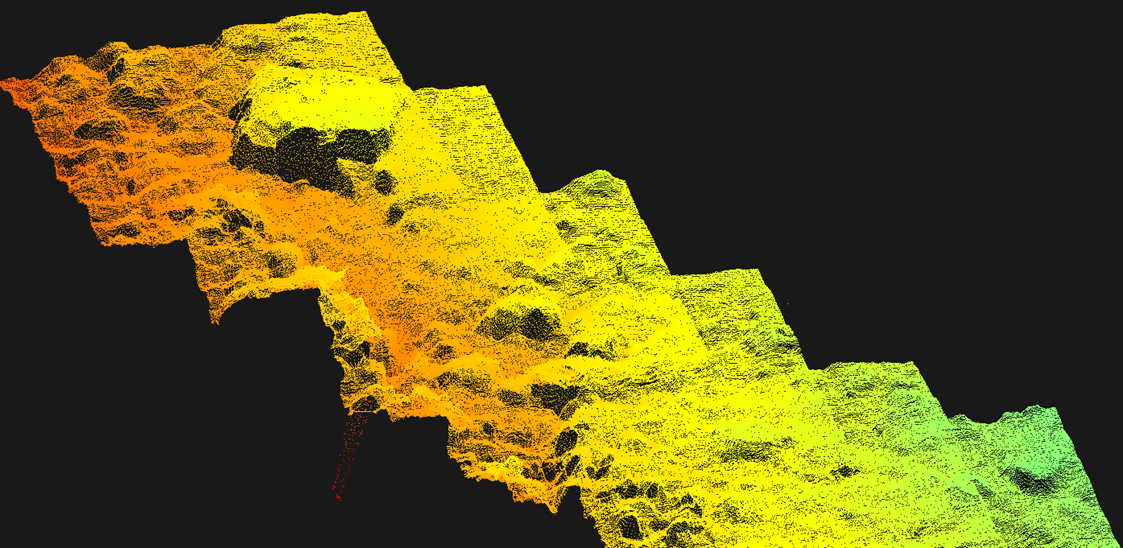

Terrain profile measurement using digital image correlation
4) Controllable suspension research.
Higher mobility, better ride comfort, handling and improved safety requires modern technology. Controllable suspension systems can more easily adapt to changes in vehicle mass due to payload changes etc. whilst maintaining ride, handling and safety. Ride height control on the suspension can for example be used to lift up the vehicle which will increase ground clearance for better off-road mobility. At higher speeds, ride height can be reduced which will improve high-speed handling and rollover stability. Additional technologies such as semi-active springs and dampers, active anti-roll bars, all-wheel-steering etc. can adapt the vehicle to different operating conditions and can even be applied to improved structural life.
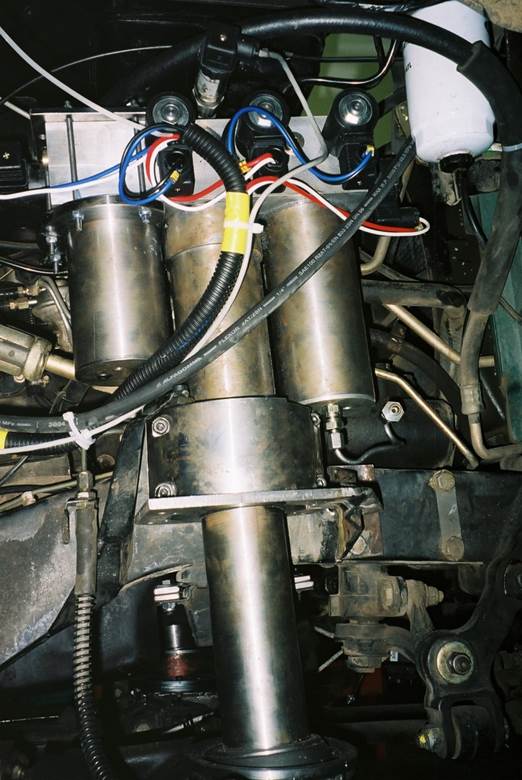
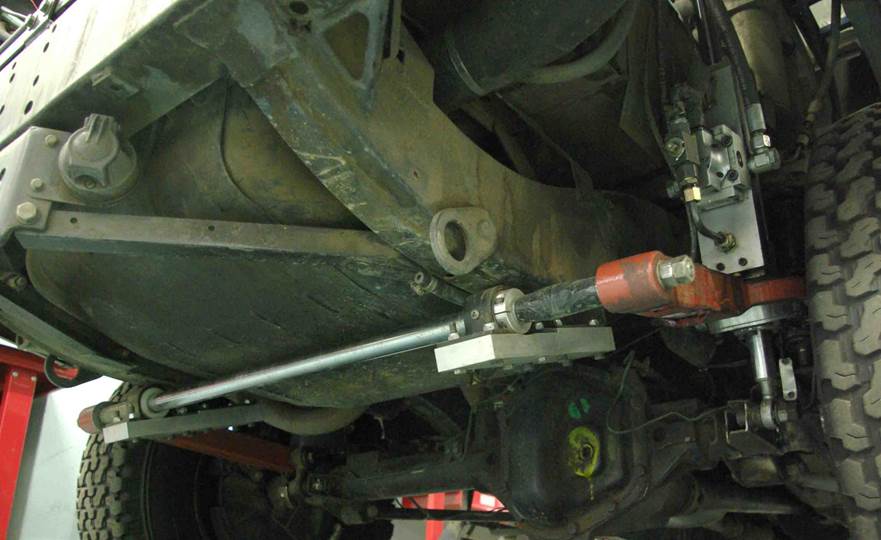
4 State Semi-active Suspension System (4S4) Active anti-roll bar
5) The ride comfort vs. handling compromise.
The suspension characteristics required to achieve good vehicle handling differ substantially from the characteristics required for good ride comfort. This problem becomes more severe where the change in payload is significant. Characteristics for on-road driving also vary significantly from that required for good off-road mobility. The situation becomes even more complex when roll-over and structural life requirements are added to the list of specifications. A significant contribution can be made by developing algorithms for making the ride comfort vs. handling decision and control the suspension and other vehicle systems accordingly. Techniques for classifying the driving scenario are a new approach that can add significant value to the decision-making process.
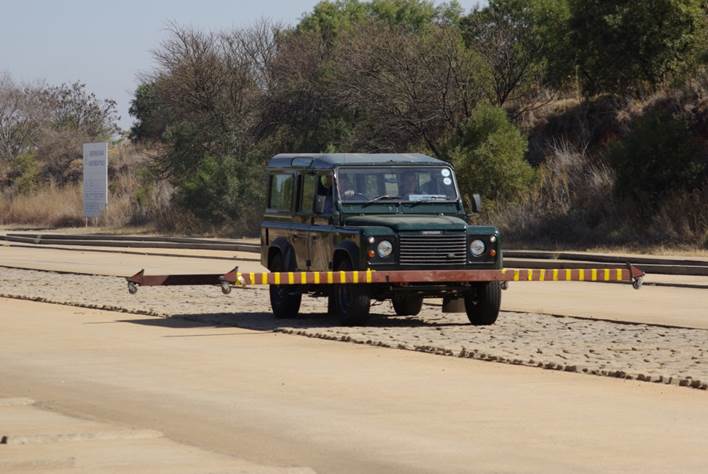
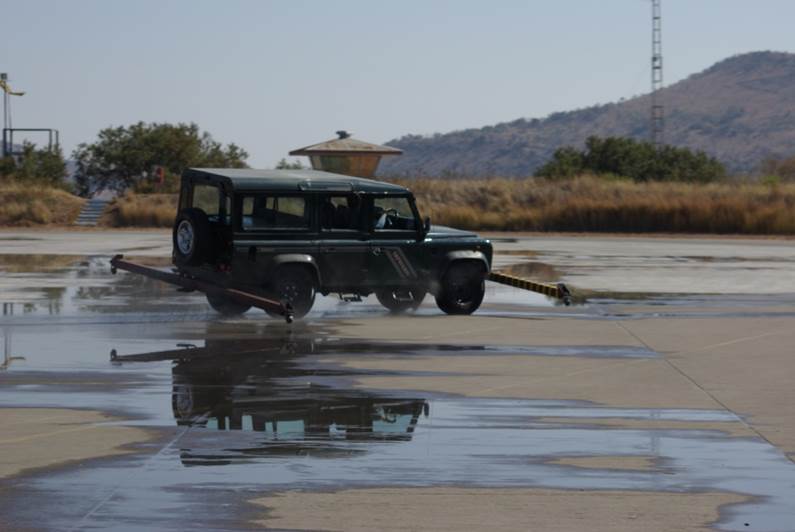
Ride comfort test over rough terrain Handling test on smooth wet road
6) Dynamic control of autonomous vehicles.
Control of autonomous vehicles at high speeds over rough terrain remains a considerable challenge. Steering control, speed control, transmission control and braking control need to be integrated into a workable solution. Current state-of-the-art in autonomous vehicle control (i.e. DARPA challenge) is still limited to low speeds where linear vehicle models work well. At high speeds the non-linearities become dominant and the need exists for the vehicle dynamics to be described, analyzed and predicted quickly and reliably. Importantly, many of these technologies can be applied as driver aids and therefore can be implemented on normal vehicles where control can improve comfort and safety by aiding the driver. Some of the ideas are also applicable to apllication such as sensor platform stabilization.

Severe high speed double lane change handling test performed autonomously (i.e. without the driver controlling the steering)
7) Vehicle dynamics modeling.
Although acceptable results have been achieved in developing validated vehicle models, there is still significant room for improvement. The vast majority of the validated models were only developed for 4-wheeled vehicles. Vehicles with multiple axles as well as multiple tyres per axle pose additional challenges. Many heavy vehicles fall in this category and the modeling of ride comfort, handling, roll-over, stability and forces applied to vehicles structure must be verified and validated against test results.
The group actively co-operates with industry and many of its projects and programs are supported through industry funding. Many of the VDG activities are centered around the Sasol Laboratory for Structural Mechanics , which is well equipped.

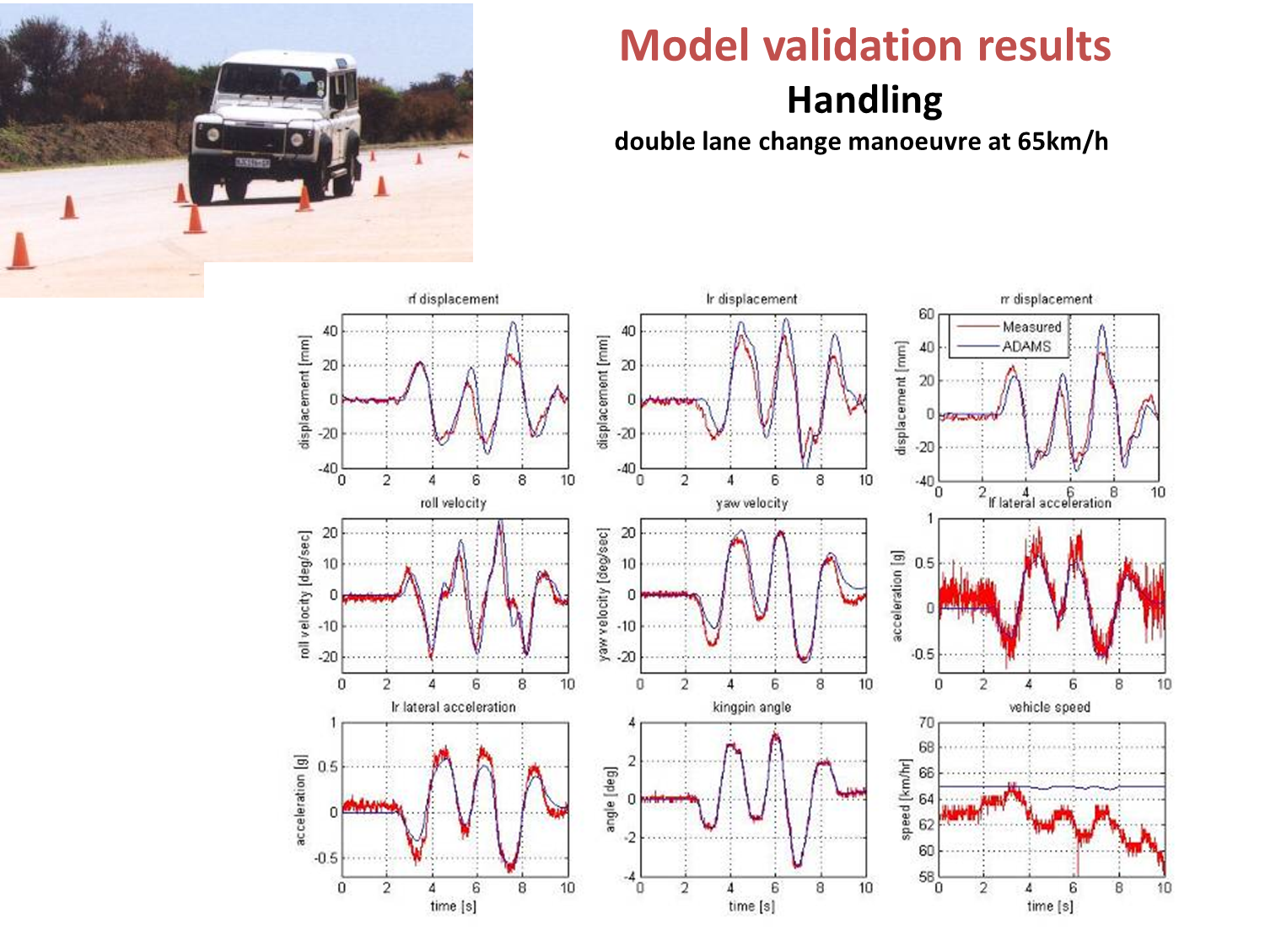
· Validate and calibrate existing tyre test equipment
· Build dynamic models of existing tyre test equipment
· Upgrade existing equipment to measure vertical forces, traction and braking characteristics as well as testing at larger slip angles
· Correlate and validate different tyre models using dynamic models and experiments
· Investigate best tyre models to be used for handling analysis
· Investigate best tyre models to be used for ride comfort analysis over rough roads
· Investigate frequency response of tyre models
· Compare 2-dimensional and 3-dimensional tyre-road contact models
Copyright © University of Pretoria 2025. All rights reserved.
Get Social With Us
Download the UP Mobile App